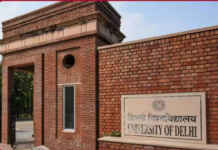Urban Gardening: Cultivating Green Spaces in Cities
Introduction
Development does not care about the environment or people any longer. While buildings are getting taller and cityscapes keep changing by the minute, individuals want to see more green spaces in cities. Green areas have become a rare resource in densely populated urban centers where pollution, heat waves, and loss of biodiversity are rampant. Urban gardening is the practice of growing plants and vegetables within city limits and it offers one answer to these problems while benefiting humanity as well as the earth itself.
The Significance of Urban Gardening
Urban gardening significantly helps in reducing environmental degradation caused by urbanization processes. Here there are few gardens since space is limited due to high population densities coupled with pollution; this means that temperatures increase rapidly leading into what is known as “urban heat island effect” therefore causing further reduction in species diversity even though it may seem like everything changes all around us each second with those skyscrapers striving towards heaven only knows how many stories up above our heads yet still every single minute somebody somewhere demands their fair share of earth be set aside for parks flowers trees grass but among other benefits also comes peace pockets amidst all this chaos which can be achieved only through bringing them closer home so that we don’t need go out searching for them far away from our houses.
Another importance brought about by urban gardening lies on its ability to foster sustainable living through various methods such as composting rainwater harvesting or organic farming practices among others. In addition, carbon miles used during transportation production processes are reduced when people engage themselves into growing what they consume thus creating a healthier planet but above all things ensuring food security both at individual community levels as well global scale.
Urban farming also builds community resilience through self-sufficiency and food security. When natural disasters or interruptions in the food supply occur, urban farms may offer fresh fruits and necessary minerals for consumption by inhabitants thus decreasing reliance on external sources of nutrition while improving adaptation to challenges.
What makes urban gardening great is that it can revive dead spaces in cities while at the same time improving the lives of people living around such areas. These spaces include empty lots, rooftops, abandoned buildings among others which are converted into community gardens; this not only beautifies neighborhoods but also enhances connectivity with nature as well as each other through creation of meeting points within these gardens.
Apart from just planting crops, another important thing about urban farming is its ability to foster resilience, sustainability and community development in cities. Cities should promote greener areas by recognizing their significance in health promotion hence incorporate more initiatives on urban agriculture so as to ensure that our cities become healthier and sustainable places for current and future generations.
Benefits for Individuals and Communities
Urban gardens offer people a way to disconnect from the fast pace of city life and participate in food production closer to home. Urban gardeners can enjoy their living plants flourish and bear fruits, whether they are growing herbs on a windowsill, working in a community garden plot or participating in guerrilla gardening.
Moreover, urban gardens have the potential to address food deserts and improve food sovereignty in the most marginalized urban communities. These community gardens have been found as major sources of fresh produce for urban dwellers living in areas where it is not readily available. In such gardens, neighborhoods can take charge of what they eat by themselves thus promoting healthy eating habits.
Additionally, urban gardening acts as an impetus towards social cohesion and community involvement since people come together around one goal. Community gardens serve as meeting places where different kinds of people can meet share knowledge resources and experiences. Such shared spaces foster relationship building among city residents who work together on gardening projects thereby creating stronger communities as well joint ownership over common areas is nurtured through this process.
Reimagining Urban Gardens
The creativity and enthusiasm behind urban agriculture have led to the development of new methods and technologies for using space in cities more efficiently as well as optimizing resources. Among the most groundbreaking approaches are hydroponic systems, vertical gardens, and aquaponics.
Moreover, urban gardens have started being designed with sustainability and resiliency at their core. In an attempt to minimize ecological footprints while promoting self-sufficiency rainwater harvesting systems, composting facilities, and renewable energy sources have been incorporated into many projects.
Urban gardening is also being used as an educational tool that fosters community building. Schools universities NGOs establish garden-based learning programs where students not only gain skills necessary for food production but also learn how to take care of their environment live healthy lifestyles; thus these initiatives do not only provide relevant knowledge competencies but also instill environmental consciousness citizenship values among young people.
Conclusion
Urban gardening can transform cities into habitable places that are environmentally friendly sustainable. Cities can start integrating green spaces within them while practicing community-based gardens which will go a long way in making this dream come true.
As the urban population continues to increase and environmental challenges mount, the role of urban gardening in the development of green spaces in the cities cannot be underestimated. Cities have to adopt innovative ways of embracing such development and, therefore, find cooperation within stakeholders to realize a greener, more resilient, and equitable future for all city-dwellers.
In a nutshell, urban gardening is not about planting; it is about making a greener and more sustainable future for cities and communities worldwide. Co-operative action and shared commitment to make our urban landscapes will create cities that are the epicenters of innovation and opportunity but, also, are havens of greenery, beauty, and well-being for generations to come.




























